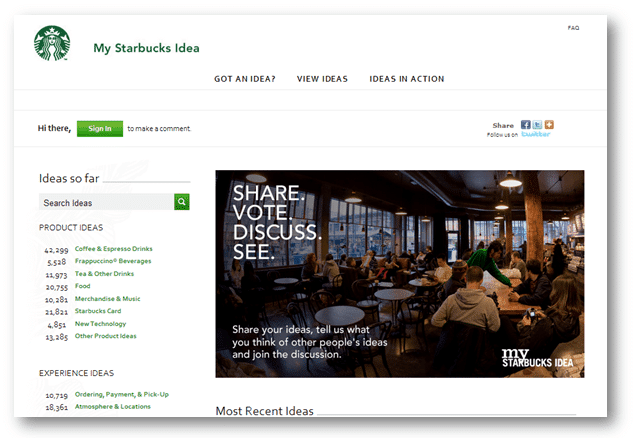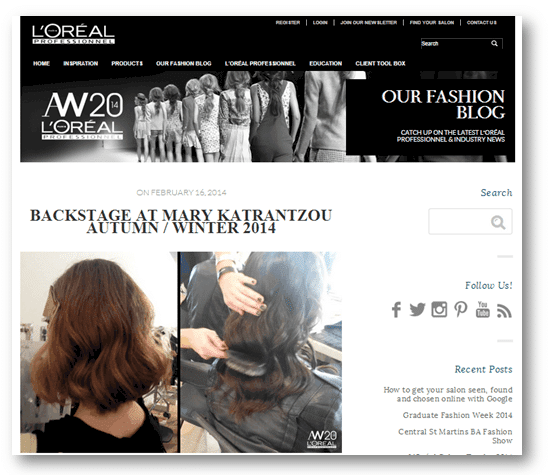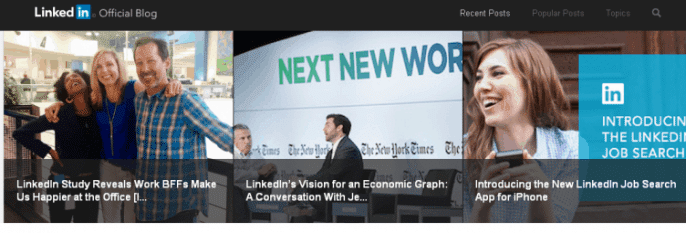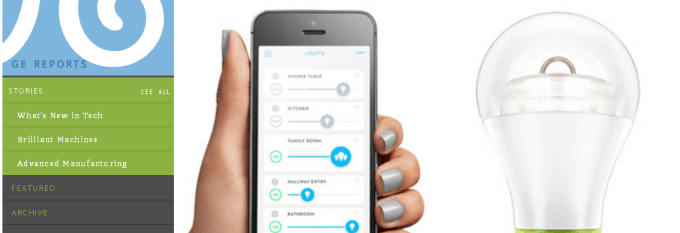Traditional communication used to be top-down. Messages were driven directly from the company to the user or prospect, without real interaction between brands and their audience. Even then, sometimes consumers felt that brands traditional approaches (through radio, TV, newspapers) were intrusive in their personal lives. In these last years, things have changed and such strategies are now outdated. Communication 2.0. is interactive — that’s why companies need a corporate blog because consumers choose what to read, see, listen to and who to follow according to their tastes and interests. And your brand better give that to them!
Companies that have adapted quickly to this change, have begun to develop Content Marketing strategies, where communication is much more personal, and where the old public relation strategies are now outdated. The most important thing for brands now is to strike up a meaningful, participative dialogue with the people who want to buy their products or services.
If you have already read the article about “10 rules to consider before creating a corporate blog,” today we want to inspire by sharing 5 blogs that impressed us with the perfect mix of new communication elements:
In this article you’ll learn…
My Starbucks Idea, Got an Idea?
The best way for a brand to attract its potential audience is by interacting with them and encouraging them to talk about their needs. This is what Starbucks offers on “My Starbucks Idea,” their blog that gives visitors the chance to participate in the new product decisions.
Here’s how it works: First, you have to register at “My Starbuck Idea” in two simple steps. Then, write a suggestion for something you would like your barista to offer the next time you go. Finally, people participating on the blog will be able to vote for your idea. The most popular ideas will be developed by Starbucks!
POSITIVE POINTS:
- They create a direct channel of communication with their audience.
- They get the audience to feel like part of the brand through real product development.
Can you imagine a better way to give your audience a voice?

L’Oreal Professionnel, the B2B blog
We get used to seeing fashion and beauty blogs with video tutorials, styling tips, etc. like this one, created by Lush Cosmetics. However, it is not that common to find a B2B blog that does the same. “L’Oréal Professionnel” is a UK blog dedicated to hairdressers and salons where you can find interesting advice, not only related to hairdressers techniques, but also some strategic business tips on how to position yourself on Google. This is content that’s target specific to create more prospects.
In addition, L’Oréal has it own hairdresser school and a “Hairdressers Awards” ceremony to form deeper connections with their target audience.
POSITIVE POINTS:
- They provide a section for each of L’Oréal’s targets.
- They generate quality content for this target thaht’s not only related to the brand, but to their needs.

Linkedin Blog
Linkedin’s blog is oriented towards a broad target of professionals. It develops its content marketing strategy by featuring articles for entrepreneurs, HR professionals, designers, technology enthusiasts, etc — basically anyone who has a job and is on the platform. It also combines company news, tips and advice for their users to improve and update their profile on Linkedin. The perfect mix of useful content, corporate communication and strategies to permanently keep their users active on the platform!
POSITIVE POINTS:
- Each target has its own content dedicated for.
- They succeed in converting corporate communication in quality contents.

Ge Report: General Electric blog
This blog is another example that shows it’s possible to create a corporate blog and connect with your target audience. This blog in particular caught our attention with visual design and quality content that’s dedicated to users interested in machinery, old and new technology, scientific discoveries, etc..
We shouldn’t forget that blog posts are not just a bunch of words — the words must be visually represented, too! Ge Report uses images extremely well, incorporating social sharing buttons and using humor to connect with their audience.
POSITIVE POINTS:
- Visual blog: pictures and social links play a major role in distribution.
- They use the humor to talk about serious topics.

Conclusion: what can we learn from these corporate blogs?
- Identify your audience correctly and make quality and relevant content for them
- Anticipate and identify the questions and problems your readers may have and try to answer them promptly to create a close relationship
- Work on developing cocreation strategies with your key influencers
- Use design to create a visual blog using photos and videos to enrich your content and match your corporate image
- Mix up corporate communication with quality content for your readers or they will lose interest
I hope these examples have inspired you! Do you have any others you want to share with us? Let us know!
